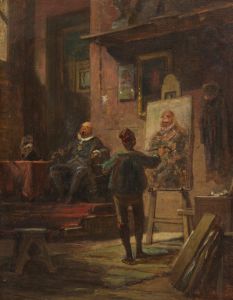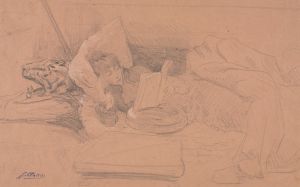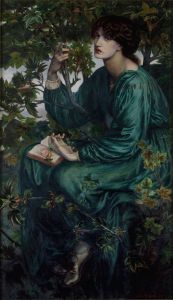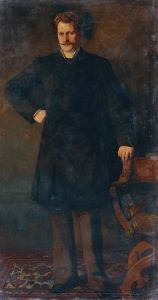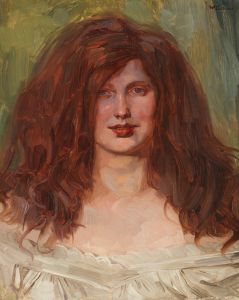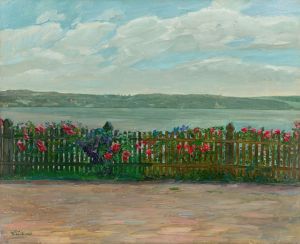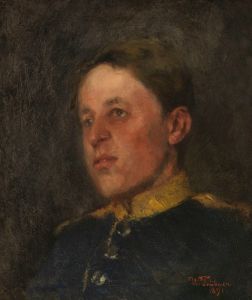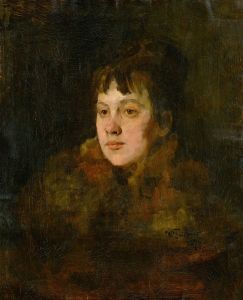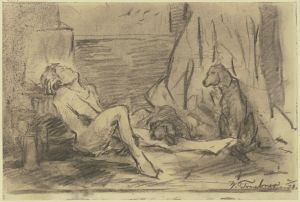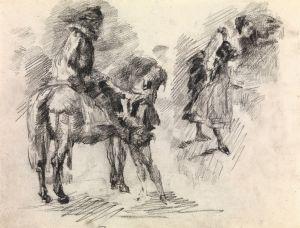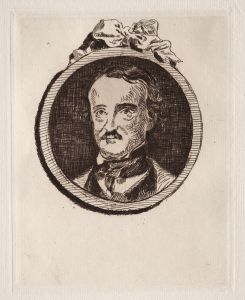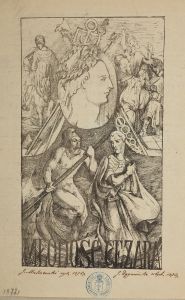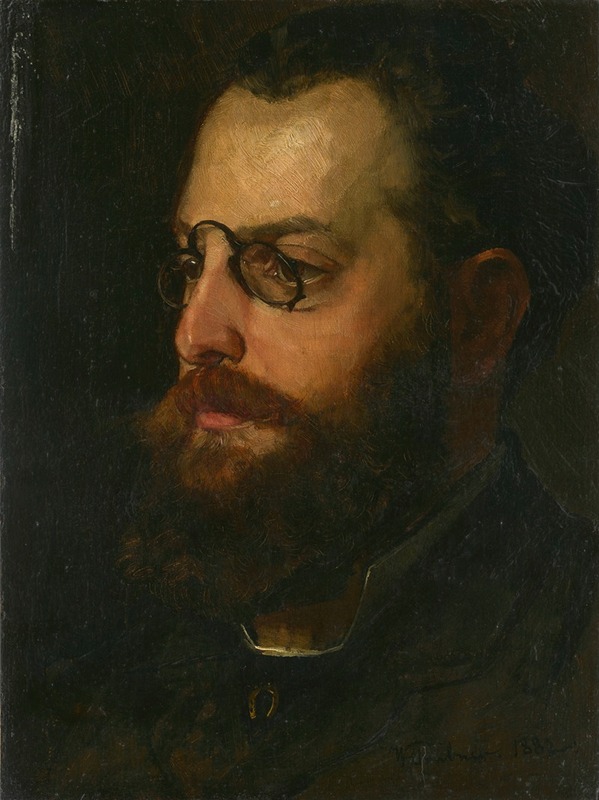
Portrait of the Poet Felix Philippi
A hand-painted replica of Wilhelm Trübner’s masterpiece Portrait of the Poet Felix Philippi, meticulously crafted by professional artists to capture the true essence of the original. Each piece is created with museum-quality canvas and rare mineral pigments, carefully painted by experienced artists with delicate brushstrokes and rich, layered colors to perfectly recreate the texture of the original artwork. Unlike machine-printed reproductions, this hand-painted version brings the painting to life, infused with the artist’s emotions and skill in every stroke. Whether for personal collection or home decoration, it instantly elevates the artistic atmosphere of any space.
Wilhelm Trübner was a prominent German painter associated with the Realist movement, known for his detailed and lifelike portraits. One of his notable works is the "Portrait of the Poet Felix Philippi." This painting exemplifies Trübner's skill in capturing the essence of his subjects through meticulous attention to detail and a keen sense of realism.
Wilhelm Trübner was born on February 3, 1851, in Heidelberg, Germany. He was a significant figure in the German art scene during the late 19th and early 20th centuries. Trübner studied at the Academy of Fine Arts in Karlsruhe and later in Munich, where he became associated with the Munich Secession, a group of artists who sought to break away from the conservative art establishment of the time. His work is characterized by a strong emphasis on realism and a focus on capturing the true nature of his subjects.
The subject of this particular painting, Felix Philippi, was a German poet and playwright. Philippi was known for his contributions to German literature during the late 19th century. Unfortunately, detailed information about Philippi's life and works is not as widely documented as some of his contemporaries, which makes this portrait an important piece in preserving his legacy.
The "Portrait of the Poet Felix Philippi" is a testament to Trübner's ability to convey the personality and character of his subjects. In this painting, Trübner employs a realistic style, using a subdued color palette and precise brushwork to create a lifelike representation of Philippi. The portrait captures Philippi in a contemplative pose, suggesting a depth of thought and introspection, which is fitting for a poet.
Trübner's technique in this portrait is indicative of his broader artistic approach. He was known for his ability to capture the subtleties of light and shadow, which added a three-dimensional quality to his work. This skill is evident in the way he renders the textures of Philippi's clothing and the nuanced expression on his face. The background of the painting is kept simple, ensuring that the focus remains on the subject.
The painting not only serves as a visual representation of Felix Philippi but also as a historical document that offers insight into the cultural and artistic milieu of the time. Trübner's work, including this portrait, reflects the broader trends in German art during the period, characterized by a move towards realism and a focus on individual expression.
Wilhelm Trübner continued to be an influential figure in the art world until his death on December 21, 1917. His portraits, including that of Felix Philippi, remain significant for their artistic merit and their ability to capture the essence of their subjects. The "Portrait of the Poet Felix Philippi" stands as a notable example of Trübner's contribution to the Realist movement and his skill as a portrait artist.





